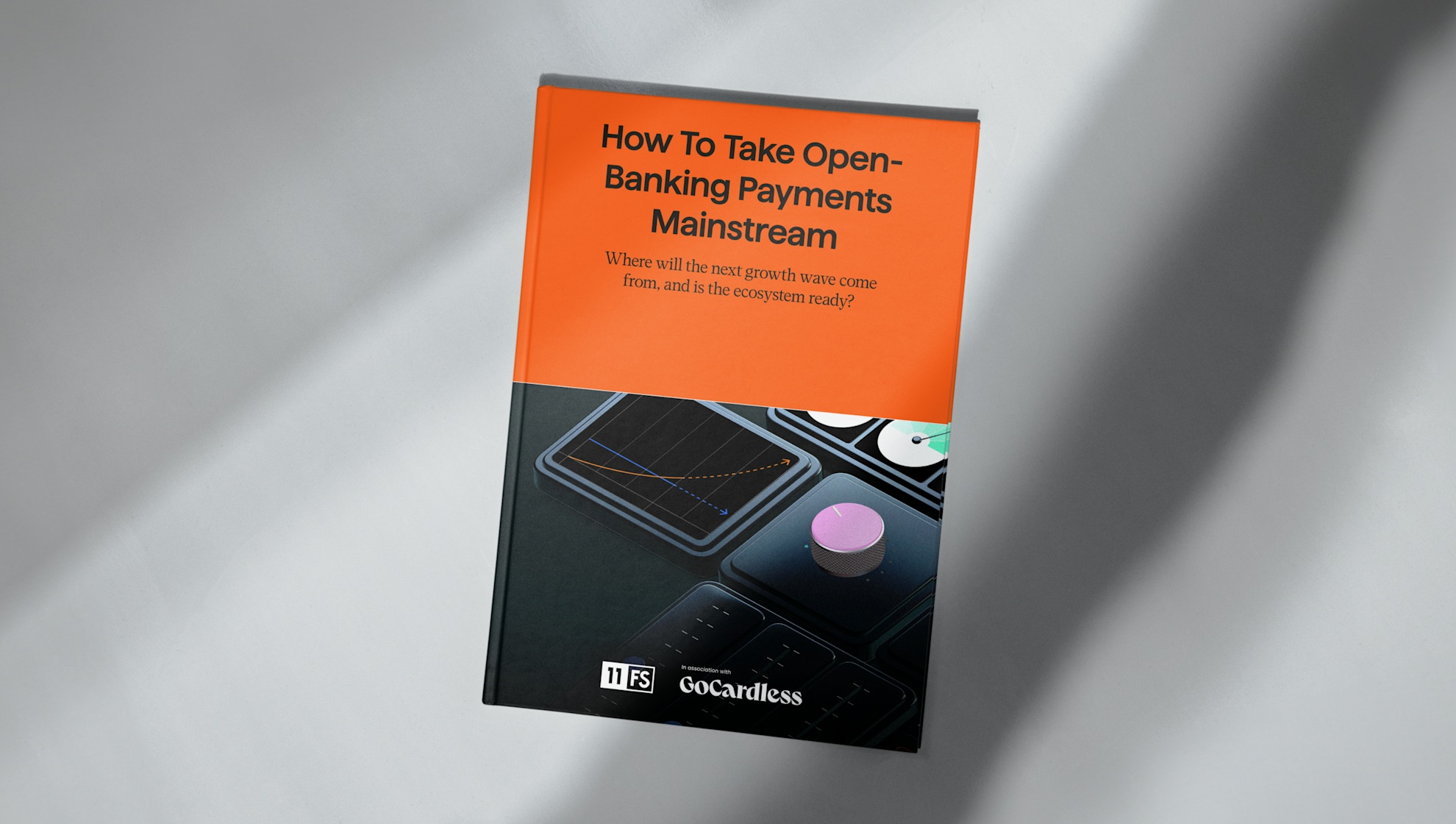How to take open banking payments mainstream

Last editedOct 20242 min read
There’s been growing interest in open banking since it launched in the UK in 2018, especially after the Competition Market Authority mandated Variable Recurring Payments (VRPs) in 2022. So much so, that we often hear people ask ‘When will open banking payments be mainstream?’
We decided to take a data-led approach to answer this question, commissioning 11:FS to survey nearly 1,000 UK businesses on their knowledge, use and expectations of open banking payments. The result was detailed insights into which use cases and their associated sectors are quietly leading the way, which are poised to benefit from open banking’s advances in the near future, and which ones still have a long way to go due to existing barriers - and exactly what those barriers are.
We’ve shared all the insights in our new ‘How to Take Open Banking Payments Mainstream’ Report, which you can now download here. We've taken a few highlights from the report and summarised them below, giving you a taste of what to expect.
Open banking progress to date
Open banking payments have seen increasing uptake, with over one in five small to medium-sized enterprises (SMEs) and one in seven UK consumers having used open banking by 2024. Our research found that businesses who’ve used open banking have experienced notable benefits compared to other payment methods, 48% of businesses noted faster payments, 35% experienced better payment visibility, and 34% reported fewer chargebacks.
The highest proportion of adoption currently comes from those sectors with remote, high-value transactions or recurring subscription use cases. Think of financial services, software-as-a-service or utilities. This is because both the payer and payee value security, visibility and control, plus businesses’ want manageable transaction fees for higher-value sales. Open banking shines in these spaces:
Reduce the risk of card not present fraud since open banking payments require upfront authentication
Payment is still simple and seamless, and often completed right through a customer’s phone
They eliminate burdensome interchange fees
Providers, like GoCardless, enable for the first payment to be taken alongside either a recurring open banking payment or direct debit within one seamless setup process. This makes onboarding new customers smoother, requiring them to only use one payment method
Will open banking payments be adopted by more sectors?
There’s already adoption across a range of sectors and use cases, and the report lays out a roadmap for when we should expect to see sectors such as consumer goods, charities, health and retail bring open banking into their payment mix on a wider scale. The caveat is we’ve identified six key challenges that need to be unlocked or improved first.
Infrastructure Development: Open banking infrastructure, particularly around APIs, has room to be developed further so they’re easier for developers and businesses to integrate into their existing systems
Customer Awareness: Buying habits mean we often choose the payment method we’re most familiar with and open banking is considerably newer and less well-known compared to cards, which have been around for a lot longer
Customer Experience: The experience of using open banking can vary depending on who you bank. We need to remove the unpredictability so that payers know exactly what to expect for every purchase.
Commercial Model: We need to keep innovating and make open banking payments faster, more frictionless, but right now the banks face a misalignment in the commercial model and aren’t properly incentivised to invest in open banking
Variable Recurring Payments (VRPs): VRPs, which would allow merchants to take recurring payments more easily and provide a true alternative to card-on-file file haven’t yet been fully mandated across all use cases
Regulatory Limits: The existing regulatory framework, while helpful, has hit its limits in terms of driving further adoption
These challenges can all be addressed, with everyone in the payments ecosystem, from banks and providers to regulators and businesses, having a crucial role to play. The report has a chapter dedicated to managing the challenges, outlining the nine steps to drive widespread adoption with payments experts sharing their guidance.
Open-banking payments will grow incrementally over the next five years
A bold statement, but one we’re able to substantiate. As our President, Paul Stoddart, writes in the foreword, the report…
‘provides an informed consensus on adoption drivers, predictions for the direction of travel and what needs to happen to make those predictions a reality. Open banking is an innovative, interconnected and fast-evolving landscape.’
To read the full report and deep-dive into its insights, download ‘How to Take Open Banking Payments Mainstream’.

